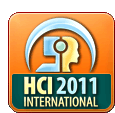T19: Practical Speech User Interface Design for Interactive Voice Response Applications
Half Day Tutorial
James R. Lewis (short bio)
IBM Software Group, USA
Objective:
The objective of this tutorial is to provide a basic foundation in current leading practices in speech user interface design, many of which are not intuitive. After attending the tutorial, participants will have fundamental grounding in the bases of speech user interface design and will have had some practice in writing and conducting Wizard of Oz evaluations of introductions, menus, and prompts.
Content and Benefits:
If speech is the most natural form of communication, then why do we often find it so hard to use speech to communicate with machines? In short, machines aren’t human, so using speech to communicate with them is anything but natural. The techniques for designing usable speech user interfaces are not obvious, and must be informed by a combination of critically interpreted scientific research and leading design practices. This tutorial draws upon the key scientific disciplines of psychology, human-computer interaction, human factors, linguistics, communication theory, and service science; the artistic disciplines of auditory design and script writing; and experience in the assessment, design, and deployment of real-world speech applications. The goal is a comprehensive yet concise survey of practical speech user interface design for interactive voice response (IVR) applications.
This tutorial focuses on the design of speech user interfaces for IVR applications. IVR applications involve significant investments from the enterprises that use them, so this is where a significant amount of current applied speech development activity has occurred. Also, there’s no point in working out a detailed user interface for an application, only to find that no one can build it in the foreseeable future – thus, the focus on practical speech user interface design for IVR applications.
User interfaces for IVR applications are especially challenging because they require human-computer interaction solely through the audio channel, without any visual display. Furthermore, most IVR applications must be immediately usable because callers often have little experience with the application and have no alternative means for learning how to use the application. Whether the IVR will route the call to an agent or provide self-service, it must efficiently guide the caller through the task or risk losing the call (and, possibly, a customer).
- 08:30 Introduction – Handout Page 1 (3 slides)
- 08:35 The Importance of Speech User Interface Design – Handout Page 2 (9 slides)
- 08:55 Design Methodology – Handout Page 7 (2 slides)
- 09:00 Getting Started – High-Level Design Decisions – Handout Page 8 (12 slides)
- 09:30 Getting Specific – Low-Level Design Decisions – Handout Page 14 (31 slides)
- 10:00 Break
- 10:30 Getting Specific (continued)
- 10:45 Exercises
- 11:45 Final Words – Handout Page 31 (1 slide)
Target Audience:
This tutorial is appropriate for anyone with an interest in speech user interface design, but especially for those interested in the design of interactive voice response applications, especially interaction designers interesting in making the transition from visual to speech user interface design. Managers of speech user interface design projects should be able to use this information to get a better understanding of what their designers do and how to avoid some unfortunately common but ineffective design practices. Even experienced VUI designers may encounter new practices based on the latest research.
Brief Biographical Sketch:


